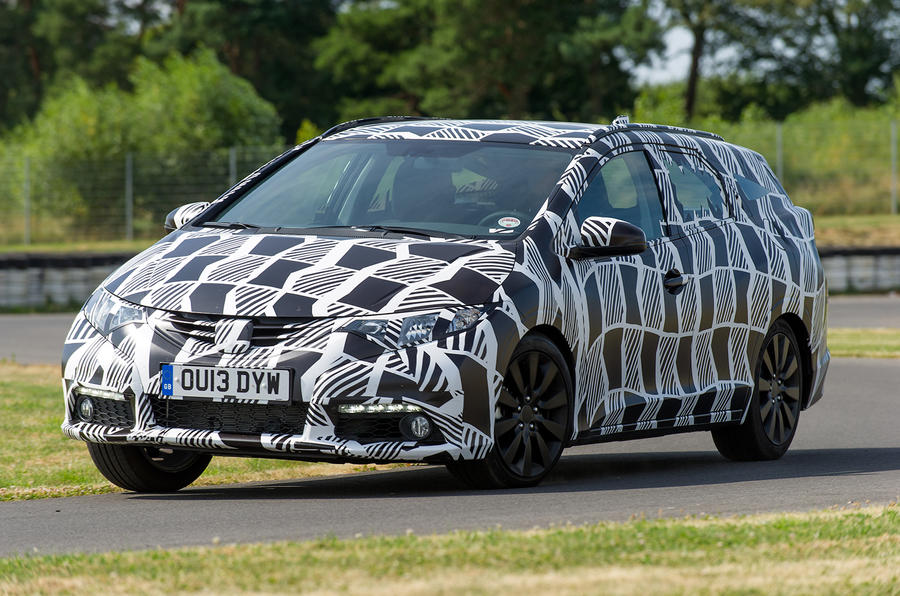The Civic Tourer is on the same wheelbase as the standard five-door hatchback. It will be built at HMUK Swindon, and uses the hatchback’s engines and major mechanicals – with one addition: adaptive dampers sourced from Sachs. Uniquely, they’re offered as an option for the rear axle only – Honda’s justification being that by dropping the adaptive units on the front they can produce an adaptive chassis with 80 per cent of the functionality of a four-corner system but at half the cost, weight and complexity.
Makes a pragmatic kind of sense typical of Honda – and it works quite well. At a steady state cruise in any car, the greater proportion of ride control flows from the rear axle, and you become very aware of that fact when flicking between ‘Comfort’, ‘Normal’ and ‘Dynamic’ modes on the Civic’s centre stack and perceiving plenty of difference. Not as much as you’d feel in magnetorhelogically damped Audi, or even a Volkswagen Golf with adaptive dampers – but enough to make the system worth having.
Our test allowed drives in both a standard passively damped Tourer and an adaptively damped one. The standard car’s a little on the firm-riding side; has to be, says Honda, to provide decent body control with max load onboard. It’s fine – just not quite as roundly impressive as the five-door Civic 1.6 i-DTEC we drove earlier this year.
‘Comfort’ mode on the actively damped car, however, adds a more supple, loping motorway compliance that the passively damped Civic wagon can’t quite match. It also seems to take little precision or feel away from the steering, nor allows the car’s body to wallow. Because the dampers are active, they automatically compensate for load and for a tortuous road surface, firming up in both compression and rebound when necessary. Their function feels a bit like the air-sprung rear-end of a Mercedes E-class Estate, without the automatic self-levelling.
The car rides quietly too, and has pleasing weight and feedback through the steering wheel rim. Handling balance is very decent; rounded, with a slight stability bias, which is exactly as it should be in a car like this.
The engine range will include Honda’s 1.8-litre i-VTEC petrol and its low-emissions 1.6-litre i-DTEC diesel. The latter powered our test prototype, and again showed impressive refinement, flexibility and economy, and very respectable performance for an engine of its kind.



















Join the debate
Add your comment
At last...
... Honda made a 1.6L diesel. Now its gonna put it in every little car it makes. It may be okay in the Civic and this estate version but is an underkill in the CRV. Is underkill even a word as the antonym of overkill?
regarding boot space
The Skoda Octavia 4x4 estate has a multi link rear end and still keeps the boot space of its torsion beam rear suspension sisters? So when you say "And thanks to the Civic’s space-efficient torsion beam rear suspension system, they've hit the bullseye" regarding boot space, it seems that the suspension
design doesn't have much effect on space efficiency? it looks more like Honda
making 'torsion beam' sound like a great engineering solution when they are actually just saving money.
LIke the look of this
Not form the above camouflaged photos but from previous renderings .
Would like to give it a try when it comes out . Think this looks much better than the hatch but its pricy compared to the new Octavia Estate .
In fact Im so interested by it Im going to get a second hand car to tide me over till it comes out in 2014 .